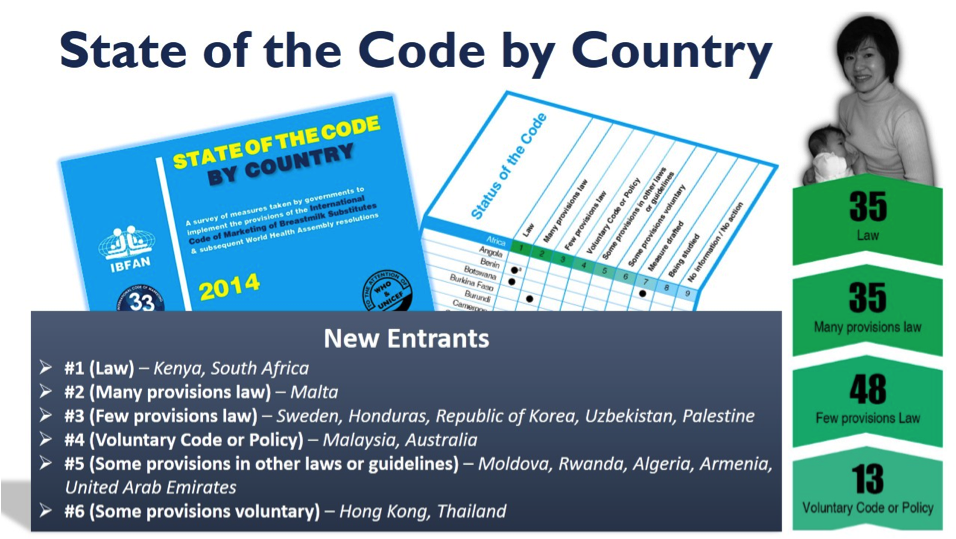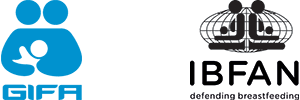
Announcing ICDC’s latest State of the Code by Country (SOC 2014) Chart
In total, 80% of the 198 countries shown on this chart have taken some action to implement the International Code of Marketing of Breastmilk Substitutes and subsequent World Health Assembly (WHA) resolutions (the Code).
70 countries have adopted national laws based on the Code: 35 in full and 35 with many Code provisions. These are the first 2 categories on the chart which “grades” all countries in terms of their efforts to protect breastfeeding by regulating marketing. Grade 1 is the best, while those in category 9 have taken no action at all. (This grade includes the USA, Somalia, North Korea and some Pacific islands)
Many countries in category 3, cover only infant formula. This narrow approach, encouraged by industry, capitalises on a mistaken belief that breastfeeding exclusively for the first six months is the only priority and that the promotion of formula for older babies does not impact on breastfeeding. It not only ignores the importance of continued breastfeeding, but allows markets to be segmented for the promotion of follow-up formulas and toddler milks, often using the same brand name and similar labeling. This is contrary to the language and spirit of the Code.
The Chart is being launched at the WHA to encourage Member States to find out –
- The “grade” of their country in Code implementation
- How their country compares to others in the region and globally
Member States have been assessed on the comprehensiveness of their laws and other national measures but the SOC chart is not a qualitative assessment of enforcement, monitoring and overall efficacy of these measures. Another IBFAN publication can shed more light on the impact of the measures to control marketing practices of breastmilk substitutes and related products. See the violations found in IBFAN’s latest monitoring report: Breaking the Rules 2014. Details on website: www.ibfan-icdc.org
The worldwide baby food market is estimated to be worth US$ 41 billion a year. The need to protect breastfeeding becomes more urgent in emerging markets where commercial promotion is fuelling the appetite for “elitist” and “scientific” products from an expanding middle class. Companies are investing in public/private partnerships and corporate sponsorships with public health authorities, professional health associations and development agencies for infant and young child feeding programmes. These partnerships build alliances and legislating strong laws becomes an uphill battle as industry influence grows across a broader spectrum of players.
The 2014 SOC chart can also be used as a advocacy tool to convince policy makers that they need to develop and /or strengthen legislative, regulatory or other effective measures to control the marketing of breastmilk substitutes as Member States were urged to do in WHA resolution 63.23 [2012] and many earlier resolutions.
Get your copy of State of the Code by Country 2014 from IBFAN-ICDC today:
code@ibfan-icdc.org
Retail price: USD 5.00 inclusive of postage
